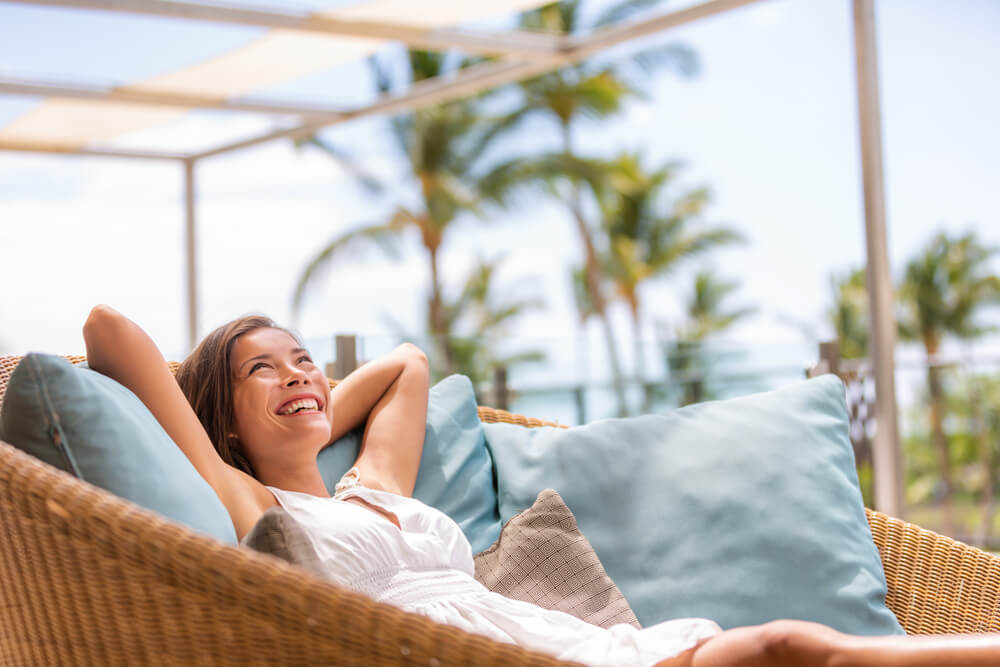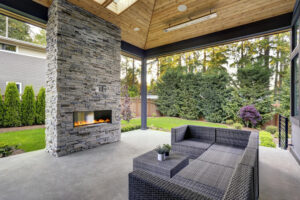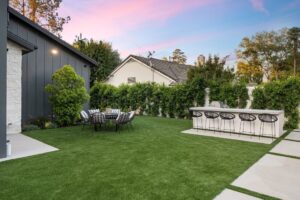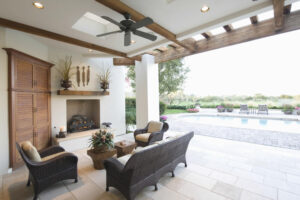As the blazing summer sun beats down, creating a comfortable and inviting outdoor space can be a challenge, but it doesn’t have to be. With the right outdoor shade solutions, you can transform any patio, garden, or backyard into a cool oasis perfect for relaxation and entertainment. From versatile umbrellas and elegant pergolas to modern shade sails and practical awnings, there are numerous options to suit any style and budget.
These solutions not only provide much-needed relief from the heat but also add aesthetic value to your space. In this guide, Cricket Pavers team delves into various summer shade solutions, empowering you to create an outdoor haven that combats the sun’s intensity while elevating the enjoyment of your surroundings.
Transform Your Outdoor Space
Embrace Outdoor Living
Transforming your outdoor space into a haven of comfort and style begins with embracing the concept of outdoor living. Start by envisioning how you’d like to use your space. Consider areas for dining, relaxation, and entertainment. Incorporate elements that enhance functionality, like comfortable seating or a fire pit for cooler evenings. Introduce textures with outdoor rugs and cushions to create a cozy, indoor-like feel. Lighting is crucial; string lights or solar-powered lanterns can add ambiance and extend the usability of your space into the night.
Remember, the goal is to blur the lines between indoor and outdoor living, making the transition seamless. Plants can also play a vital role, offering natural beauty and privacy. By thoughtfully integrating these elements, you can create a versatile outdoor area that invites you to unwind and enjoy nature from the comfort of your home.
Importance of Shade Solutions
Incorporating shade solutions into your outdoor space is essential for several reasons. Firstly, they provide critical protection from the sun’s harmful UV rays, ensuring that you and your loved ones can enjoy the outdoors safely. By reducing direct sunlight exposure, shade solutions help in lowering temperatures, creating a more comfortable environment for relaxation and social gatherings. This can be particularly beneficial during the peak summer months when heat can be overwhelming.
Additionally, shade structures like pergolas or shade sails can enhance the aesthetic appeal of your space, adding architectural interest and character. They also extend the usability of your outdoor areas by making them pleasant even during midday heat. Furthermore, effective shading can help conserve energy by reducing heat transfer into your home, leading to potential savings on cooling costs. Ultimately, embracing shade solutions is not just about comfort, but also about enhancing the functionality and sustainability of your outdoor living space.
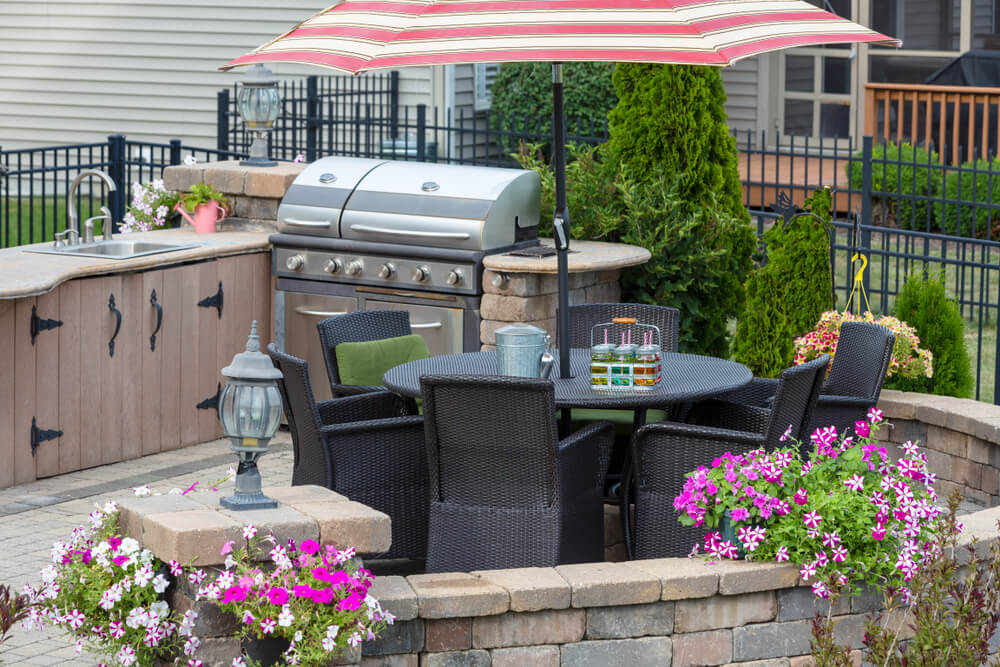
Umbrellas: Simple and Versatile
Choosing the Right Umbrella
Selecting the right umbrella for your outdoor space involves considering several factors to ensure it meets both functional and aesthetic needs. Start by assessing the area you intend to cover; this will help you determine the appropriate size. Larger umbrellas are ideal for expansive spaces, while compact ones suit smaller patios or balconies. Material choice is crucial; opt for UV-resistant fabrics to ensure long-lasting sun protection. Consider the frame’s durability too—aluminum and steel frames offer robust support and are less prone to rust.
Stability is another key factor; weighted bases or cantilever designs provide greater resilience against wind. A cantilever umbrella allows for flexible positioning, enhancing coverage without obstructing your space. Additionally, consider the ease of use; features like crank lifts or tilt functions can provide added convenience. By carefully selecting an umbrella that aligns with your space requirements and style preferences, you can enhance your outdoor experience significantly.
Stability and Durability Tips
Ensuring the stability and durability of your outdoor umbrella is essential for long-term use and safety. Start by selecting a sturdy base; weighted bases are highly recommended as they provide a solid foundation, reducing the risk of tipping in windy conditions. For added security, consider using ground anchors if your umbrella is positioned in an area prone to strong winds. The materials used in the umbrella’s construction also play a significant role in durability.
Choose frames made from corrosion-resistant metals like aluminum or stainless steel, which withstand the elements better than other materials. Regular maintenance is key; clean the fabric with mild soap and water to prevent mold and mildew, and check the frame for signs of wear. When not in use, close the umbrella to protect it from adverse weather, and store it indoors during off-seasons.
By following these tips, you can extend the lifespan of your umbrella, ensuring it remains a reliable shade solution for years to come.
Pergolas and Arbors: Permanent Elegance
Designing Your Pergola
Designing a pergola involves thoughtful planning to ensure it complements your outdoor space while fulfilling your shade and aesthetic needs. Start by determining the pergola’s purpose—whether it’s for dining, lounging, or as a garden feature—this will guide the size and location. Material choice is crucial; wood offers a classic, natural look, while metal provides a modern, industrial feel. Incorporate design elements like lattice panels or retractable canopies for additional shade and visual interest.
Climbing plants such as wisteria or ivy can add a lush, green canopy, enhancing the pergola’s natural beauty over time. Consider incorporating lighting elements, such as string lights or built-in LEDs, to extend usability into the evening. Flooring options like stone, pavers, or wood decking can further define the space and enhance its functionality. By integrating these elements, you can create a pergola that not only provides shade but also serves as an elegant focal point in your outdoor living area.
Enhancing with Climbing Plants
Incorporating climbing plants into your pergola design can significantly enhance its visual appeal and functionality. These plants create a natural, living canopy that offers additional shade and a sense of enclosure. Start by selecting the right plants for your climate and sunlight conditions. Fast-growing vines like wisteria or honeysuckle are popular choices for their lush foliage and fragrant flowers.
Consider using clematis or climbing roses for a splash of color and seasonal interest. When planting, ensure your pergola’s structure can support the weight of mature plants. Use trellises or wire guides to train the vines as they grow, directing them to cover the areas where shade is most needed. Regular pruning will help maintain plant health and encourage denser growth. Additionally, climbing plants can attract beneficial pollinators, enhancing your garden’s ecosystem.
By thoughtfully integrating climbing plants, you can transform your pergola into a vibrant and inviting sanctuary that melds seamlessly with nature.
Modern Appeal of Shade Sails
Installation and Advantages
Installing shade sails is a straightforward process that can bring significant advantages to your outdoor space. Begin by identifying secure anchor points such as walls, poles, or sturdy trees to support the sail. It’s essential to choose high-quality, UV-stabilized fabric for longevity and effective sun protection. The installation typically involves attaching the sail to these anchor points using tensioned cables or ropes, allowing the sail to remain taut and stable.
A key benefit of shade sails is their flexibility; they can be arranged in various configurations to suit your space and aesthetic preferences, whether overlapping for a dramatic effect or aligned for a cleaner look. Aside from their functional role in providing shade, they add a modern and stylish element to your outdoor area, enhancing visual interest. Additionally, they are energy-efficient—by reducing direct sunlight, they help lower temperatures indoors and out, potentially decreasing cooling costs during warmer months.
Design Considerations
When integrating shade sails into your outdoor space, several design considerations can enhance both functionality and aesthetics. Start by assessing the area you wish to cover; this will determine the size and shape of the sails. Triangular sails offer a modern, dynamic look, while square or rectangular sails provide broader coverage. Consider the sun’s path and angle to optimize shade throughout the day.
Color choice plays a significant role; lighter shades reflect sunlight, keeping spaces cooler, whereas darker shades may offer a more striking visual impact. Ensure the sails are installed with adequate tension and slope to facilitate water runoff, preventing sagging and damage. Additionally, consider the backdrop and existing landscape—shade sails should harmonize with the environment, complementing architectural features and natural elements. By thoughtfully considering these factors, you can create a cohesive and stylish design that enhances your outdoor living area’s appeal while providing effective sun protection.
Retractable Awnings: Flexible Shade
Benefits of Motorized Awnings
Motorized awnings offer a convenient and efficient solution for flexible sun protection in outdoor spaces. One of the primary benefits is ease of use; with the push of a button or a remote control, you can extend or retract the awning effortlessly, adjusting to changing weather conditions without manual effort. This convenience is particularly advantageous for elderly users or those with limited mobility. Motorized awnings also provide greater control over shade and sunlight, enhancing comfort and usability of outdoor areas throughout the day.
Additionally, they contribute to energy efficiency; by blocking direct sunlight, they help reduce indoor temperatures, potentially lowering air conditioning costs. Many motorized systems are equipped with sensors that automatically adjust the awning based on sunlight or wind conditions, protecting the awning from damage during adverse weather. Lastly, their sleek and modern design can enhance the aesthetic appeal of your home, adding value and style to your outdoor living space.
Energy Savings and Comfort
Retractable awnings are not only a stylish addition to outdoor spaces but also a practical investment in energy savings and comfort. By providing adjustable shade, these awnings can significantly reduce indoor temperatures, cutting down on the need for air conditioning during hot months. This reduction in energy consumption translates to lower utility bills and a smaller carbon footprint, making them an eco-friendly choice for homeowners. Beyond energy efficiency, retractable awnings also enhance outdoor comfort.
They create a cooler environment on patios or decks, allowing you to enjoy outdoor activities without the discomfort of direct sunlight. The ability to retract the awning when not needed ensures that natural light can enter your home during cooler months, maintaining a bright and inviting interior. With these benefits, retractable awnings offer a versatile solution that balances environmental responsibility with enhanced living comfort, making them a valuable addition to any home.
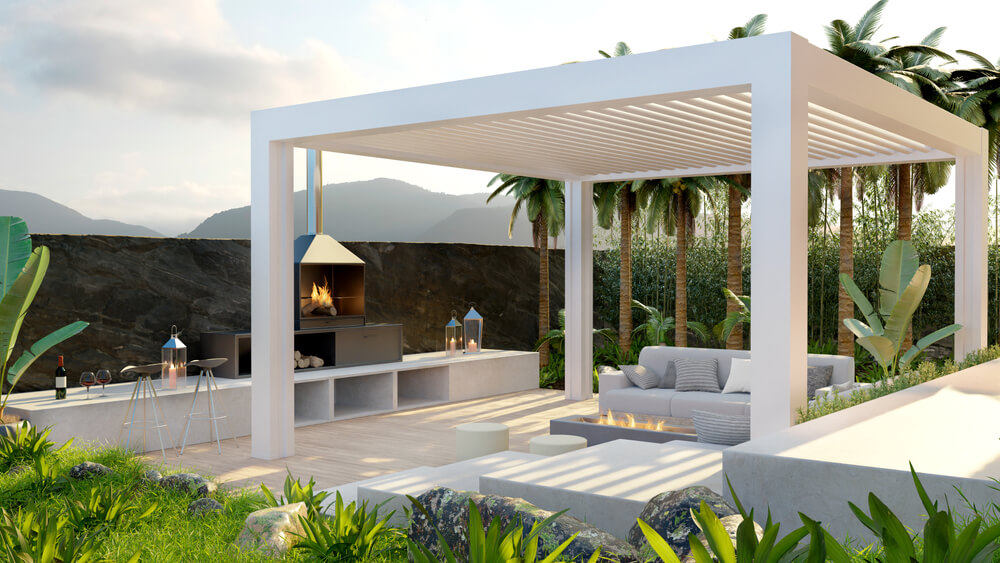
Natural Shade: Trees and Plants
Strategic Planting for Optimal Shade
Strategic planting of trees and large plants can create natural shade solutions that enhance both comfort and aesthetics in your outdoor space. Begin by assessing the sun’s path and identifying areas in need of shade during peak sunlight hours. Planting deciduous trees on the southern or western sides of your home can provide substantial shade in summer while allowing sunlight to warm your home in winter after the leaves fall. Consider tree species with wide canopies, such as maples or oaks, which are effective at blocking sunlight.
For quicker results, select fast-growing varieties. Additionally, layering with smaller plants and shrubs can create a more comprehensive shading effect and contribute to a cooler microclimate. Integrating evergreens can offer year-round protection and add privacy. By thoughtfully planning your landscape layout, you can naturally reduce temperatures and create a comfortable, shaded retreat that enhances your outdoor living experience while contributing to the property’s overall ecological health.
Selecting the Right Tree Varieties
Choosing the right tree varieties for natural shade involves considering climate, soil conditions, and space availability. Start by assessing your region’s climate to select trees that thrive in local conditions and require minimal maintenance. For temperate climates, deciduous trees like maples, oaks, and elms are excellent choices due to their broad canopies and seasonal leaf drop, which allows winter sunlight to penetrate. In warmer areas, consider evergreens such as pines or cypresses, which provide consistent shade and require less water.
Soil quality is another crucial factor; trees like birches prefer moist, well-drained soils, while oaks can tolerate drier conditions. Space constraints should guide the selection of tree size; smaller yards benefit from compact varieties like dogwoods or redbuds, which offer shade without overwhelming the space.
Additionally, consider the growth rate; fast-growing species like willows can provide quicker shade but may require more maintenance. By selecting appropriate tree varieties, you can create an effective and sustainable natural shade solution for your outdoor space.
Call Us!
Our team is here to help you make informed choices and make your backyard look and sound amazing! Visit our facilities and meet our friendly team!
